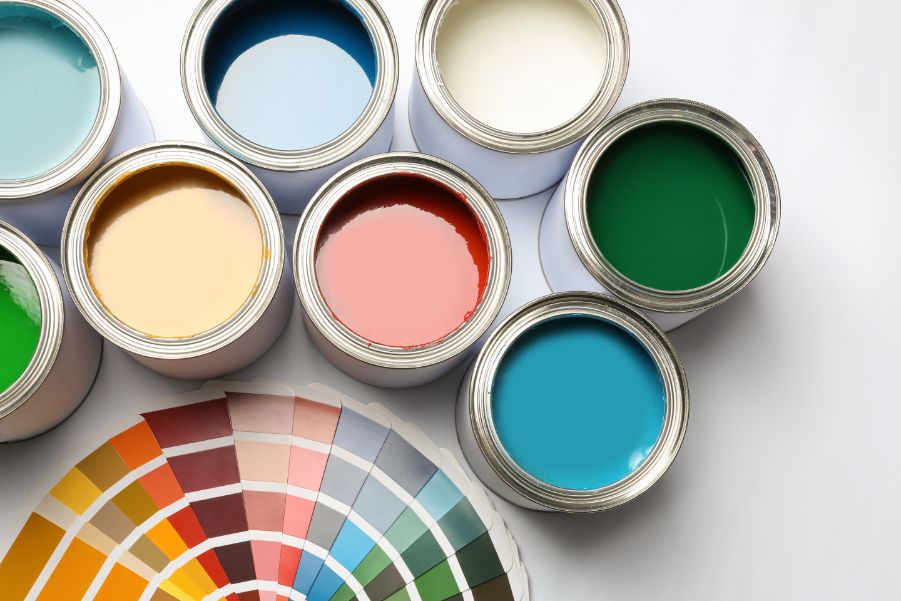Painting is one of the fastest, most affordable ways to refresh your home. You might think that all that stands between you and that perfect, new paint color is a handful of paint chips. Choosing a paint color, though, is actually the second step. What’s the first? Choosing the right paint type for your needs. And the difference between water-based, oil-based, and acrylic paint is not common knowledge.
Why It’s Important to Choose the Right Paint

Not all paints are created equal. Water-based (also called latex), oil-based, and acrylic paints are all made up of different materials. These materials react differently on different surfaces and in different conditions.
So, it’s important to know your paint to ensure you get the best results.
Before You Head to the Paint Store
Before you head to the store, it’s important to know what type of paint is on the walls. That’s because you don’t want to paint one type of paint over the other. The compounds in different paints can cause them not to adhere properly. So, if you put oil over latex, you’re going to wind up with peeling paint, and a paint job you have to redo.
While it’s unlikely that walls were painted with oil-based paint (that’s usually reserved for trim and cabinets), it’s easy to figure out what paint type you have. Just douse a cotton ball with denatured alcohol or paint deglosser, and rub it over a small area. If paint comes off, it’s latex; if not, it’s oil.
To use a different type of paint than the one on the walls, sand, clean and prime the area to be painted. This will ensure the paint sticks.
More Tips for Picking the Right Paint

Here are a couple more tips for picking the right type of paint.
- Areas of heavy contact (like trim or cabinet doors) need a paint that can withstand high traffic. Generally, oil-based or glossy latex are the best choice here.
- Speaking of gloss, here’s how you pick the right level of sheen. Shiny paint, like high-gloss, semi-gloss and satin, are easier to clean, but show every bump on the wall. Eggshell and matte are harder to clean, but disguise imperfections. A good rule of thumb? Choose lower-sheens low-traffic areas but higher-sheen for high-traffic areas like bathrooms and kitchens.
When to Choose Water-Based Paint
Water-based, or latex paints, are the most commonly used. They’re also the most environmentally-conscious option. This type of paint is good for general painting projects like doors, walls, and ceilings.
When to Choose Acrylic Paint
Acrylic paint, like latex paint, is made of acrylic resin. The difference is that, while latex is water-based, acrylic is chemical-based. The chemicals allow the paint to expand and contract with the weather and temperature, making it a good choice for home exteriors.
When to Choose Oil-Based Paint
Oil-based paints form a harder, longer-lasting coating than latex paints. Use these for any surfaces where you want the finish to be durable and last a long time, like trim and cabinets.
Whether you’re painting walls, doors or cabinets, choosing the right paint can save you time and money. And once you’ve landed on the right paint for your project, you can get some free color samples. If all of this sounds like too much work, consider hiring a house painter for your paint project.